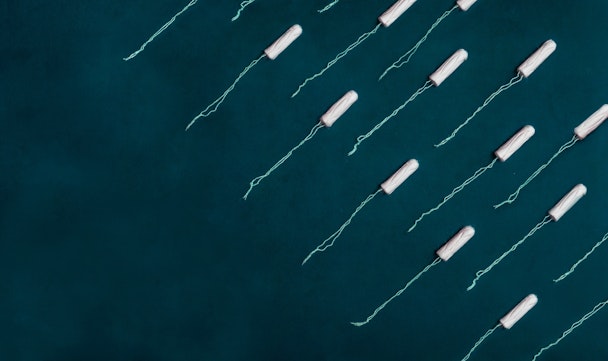A look at the emerging face of 'period power' in India
Every month, millions of women menstruate across the globe and yet the menstrual category remains very complex and under-served due to different stages of social and cultural evolution.

Time to market the menstrual category differently
For an emerging trend like this, the future lies in the hands of gen Z, as per the findings of a study launched to time with the International Menstrual Hygiene Day that falls on 28th May. The study, evocatively titled ‘The Blood Report’, points out that it is time to include men in the conversation, a segment that has been mostly left out of the menstrual conversation in India.
The study has been put together jointly by Rio Pads, a hygiene brand that launched India’s first sanitary pad for heavy flow and the Mumbai-headquartered creative and technology transformation company Schbang. It looks at a sample of 3500 menstruators and deep dives into the current status of the category, the emerging realities of the menstrual landscape in India and how brands and communication can help in making this journey easier for the consumers.
What’s in store
Period products are one category that is increasing in its importance with increasing awareness and exposure to health and hygiene. Within that, as a younger generation of menstruators gains voice and access to information, trends, purchasing behaviour and awareness on the various factors that contribute to menstrual hygiene and comfort are seeing a huge transition in India. Here is what marketers can take away:
Spotting and crafting the communication right
For too long, communication around this category has been stuck in traditional tropes in India – it was as recent as 1993 that a sanitary pad brand, Whisper (owned by P&G India) was allowed to show a sanitary pad in a commercial, and also the first to mention the word ‘periods’ in advertising.
- All that is set to change as a new generation of consumers takes centre stage. Market communication and the voice of younger menstruators is ensuring that free moving information bypasses, and even challenges, existing hierarchies. It may just be the right time for brands, the primary source of menstrual hygiene for most sections of society, to also get ready to match the moves. If done right and well, brands can win trust early if they play the role of mentors of young menstruators.
- As per the study, 79% of menstruators are introduced to menstruation by their mothers and more than half of the menstruators surveyed were not educated thoroughly about menstrual health and hygiene in school.
Get men involved too in the period-talk
- The role played by gender is very nuanced in this category with nearly half of the menstruators surveyed stated that boys did not receive menstrual education in their school.
- It is time to include men in the conversation is now more important than ever; especially through the education system, which seems to be doing little to bridge the gender gap. This opens up opportunities for tie-ups and the careful utilisation of social media messaging, points the study.
The gen-Z consumer will need different selling skills
- Like many categories, the future of the menstrual category is also in the hands of gen Z and brands would do well to not confuse legacy with loyalty here. Brands are now dealing with customers who know exactly what they want – “whether it is wings, herbal scents or greater thickness” – which means it is time to invest in design and science to create the unique distinction in a largely ‘same looking’ category. Or even in marketing to this cohort differently.
- This new-age customer group is also more educated, more willing to challenge taboos. As per the findings, of the educated menstruators only 17% surrendered to their family’s wishes when disagreeing with the beliefs and practises surrounding menstruation, and from among these qualified menstruators, individuals below the age of 24 were more likely to voice their opinions in case of disagreements and do what they prefer as opposed to individuals aged 25 and above.
- Digital is the way of life for this universe with 24% of menstruators purchasing their menstrual hygiene products online. As per the study, a majority of consumers who purchase their products online fall in the 19-34 age bracket indicating that younger menstruators are more likely to purchase menstrual hygiene products online.
Expert Speak
- Even though the menstruation journey in India is quite complex and has a huge divide when it comes to the penetration in urban versus rural markets, access, along with education on menstrual hygiene and health, are the guiding markers for the future of this critical category.
- A word of caution for brands while marketing this category is to be careful in navigating the old world and the new world. Says Kartik Johari, vice president of Nobel Hygiene (makers of Rio Pads), “while younger audiences are receptive to bold and blunt communication when discussing myths and taboos, older audiences also need to feel respected and secure. The internet is a place for all age groups, and menopause is an event of great magnitude.” Brands must, therefore, be careful of tonality so that they do not land up alienating a group of women while wooing another, he adds.
- As per Harshil Karia, co-founder, Schbang, “brands will do well to ramp up distribution to make products available in schools and colleges as well as focus on creating an environment where it is easy to talk about menstruation.” It is time to start the much-needed conversations in the mainstream, around menstruation and all the issues attached to it and perhaps mass icons need to be pertinently roped in to make the category acceptance better, he adds.

